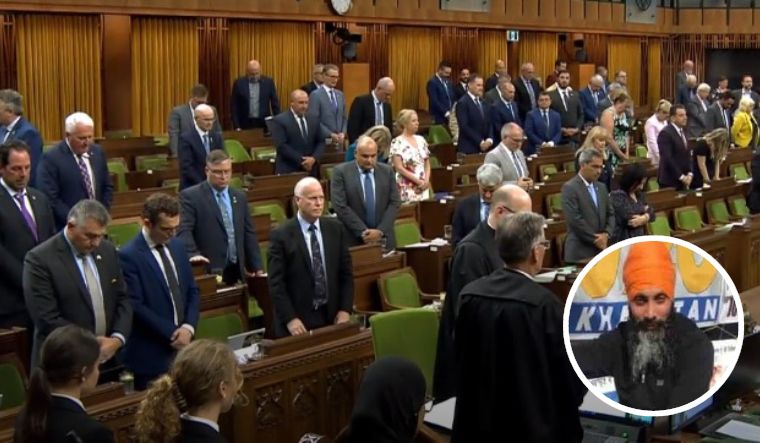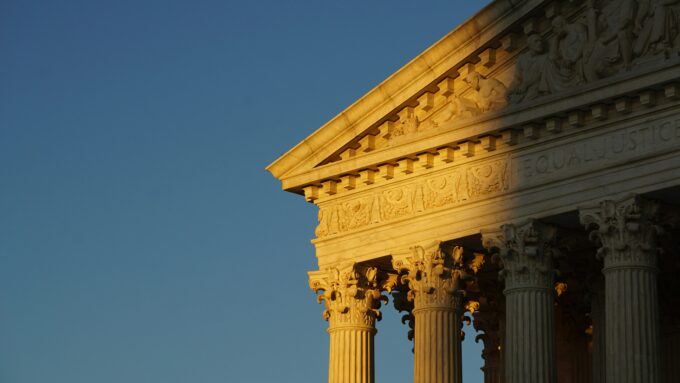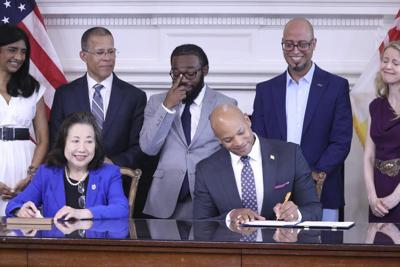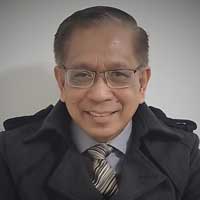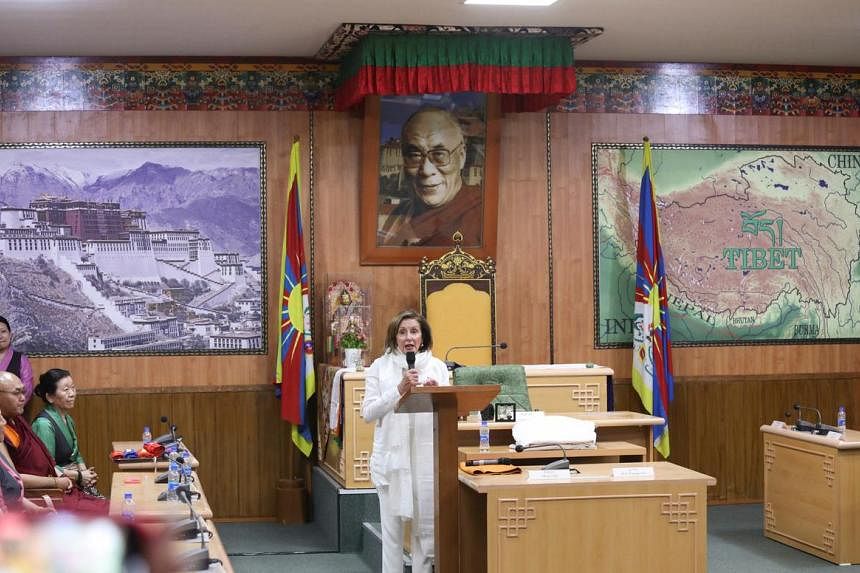Opposition Leader Peter Dutton unveils details of proposed nuclear energy plan as Shadow Treasurer Angus Taylor, left, looks on during a press conference at the Commonwealth Parliamentary Offices in Sydney, Wednesday, June 19, 2024. Australia’s main opposition party has announced plans to build Australia’s first nuclear power plants by 2037, arguing the government’s policies for decarbonizing the economy with renewable energy sources including solar, wind turbines and green hydrogen would not work. (Bianca De Marchi/AAP Image via AP)Read More
Liddell Power Station A coal-powered thermal power stations near Muswellbrook in the Hunter Valley, Australia, on Nov. 2, 2021. Australia’s main opposition party has announced, Wednesday, June 19, 2024, plans to build Australia’s first nuclear power plants by 2037, arguing the government’s policies for decarbonizing the economy with renewable energy sources including solar, wind turbines and green hydrogen would not work. (AP Photo/Mark Baker, File)
Power lines lead from the Liddell Power Station, a coal-powered thermal power station near Muswellbrook in the Hunter Valley, Australia on Nov. 2, 2021. Australia’s main opposition party has announced, Wednesday, June 19, 2024, plans to build Australia’s first nuclear power plants by 2037, arguing the government’s policies for decarbonizing the economy with renewable energy sources including solar, wind turbines and green hydrogen would not work. (AP Photo/Mark Baker, File)
BY ROD MCGUIRK
June 18, 2024
MELBOURNE, Australia (AP) — Australia’s main opposition party on Wednesday announced plans to build Australia’s first nuclear power plants as early as 2035, arguing the government’s policies for decarbonizing the economy with renewable energy sources including solar, wind turbines and green hydrogen would not work.
The policy announcement ensures the major parties will be divided on how Australia curbs its greenhouse gas emissions at elections due within a year. The parties haven’t gone to an election with the same carbon reduction policies since 2007.
“I’m very happy for the election to be a referendum on energy, on nuclear, on power prices, on lights going out, on who has a sustainable pathway for our country going forward,” opposition leader Peter Dutton told reporters.
Seven government-owned reactors would be built on the sites of aging coal-fired electricity plants in five of Australia’s six states, Dutton said. The first two would be built from 2035-to-2037 and the last in the 2040s. The estimated costs would be announced at a later date, he said.
The current center-left government has rejected nuclear power generation in Australia as too expensive. Too many coal-fired generators would have been decommissioned before nuclear power could fill the gap.
Climate Change and Energy Minister Chris Bowen accused the conservative opposition Liberal Party of serving Australia’s influential coal and gas industry lobbies.
“It’s not really an announcement. We know that Mr. Dutton wants to slow down the rollout of renewables and he wants to introduce the most expensive form of energy that’s slow to build,” Bowen told reporters.
“But today, we’ve seen no costs, we’ve seen no gigawatts, we’ve seen no detail. This is a joke. It’s a serious joke because it threatens our transition” from fossil fuels, Bowen added.
Bowen’s Labor Party came to power in the 2022 elections promising deeper cuts to Australia’s greenhouse gas emissions by 2030 than the previous coalition government had committed to.
The previous Liberal Party-led government promised to reduce emissions by between 26% and 28% below 2005 levels by the end of the decade.
Labor promised a 43% reduction and the Parliament enshrined that target in law, creating difficulties for any future government that wanted to reduce it and offering certainty for investors.
Dutton has ruled out announcing a new 2030 target before the next election. But the major parties have agreed on a net-zero emissions target by 2050.
Dutton said Labor could not reach its 2030 target with a policy toward relying solely on renewable energy.
A Liberal Party-led government would use nuclear power, renewable energy sources and “significant amounts of gas,” Dutton said.
“I want to make sure that the Australian public understands today that we have a vision for our country to deliver cleaner electricity, cheaper electricity and consistent electricity,” Dutton said.
Australia has historically been one of the world’s worst greenhouse gas emitters on a per capita basis because of its heavy reliance on abundant reserves of cheap coal and gas.
Constant conflict between the major parties over the past 17 years on how to reduce emissions led to a carbon tax introduced by a Labor Party government in 2012 being repealed by a Liberal Party-led government in 2014.
Australia’s only reactor has produced nuclear isotopes for medical use in the Sydney suburb of Lucas Heights since 1958.
Dutton said the country could only now consider introducing atomic power generation because the major parties had agreed in 2019 to the AUKUS partnership with the United States and Britain which will deliver Australia a fleet of submarines powered by U.S. nuclear technology.
The Australian public has shown a willingness to go along with what was once unthinkable.

Peter Dutton will be be asked to fill in the details of his nuclear power plan (Getty Images)
Published 19 Jun 2024
Opposition leader Peter Dutton has today nominated seven sites where he says a future Coalition government would construct nuclear power plants. For the benefit of international readers, this would be huge shift for Australia, which presently has no nuclear energy production.
Dutton has framed the policy as a response to climate change, seeking to exploit doubts about the reliability of renewable energy sources such as wind and solar. Dutton’s move has been cast in media commentary as restarting the “climate wars”.
“I’m very happy for the election to be a referendum on energy,” Dutton says.
AUKUS was a stepping stone that has led Dutton to this next stage.
Three years ago, Scott Morrison unveiled the nuclear-powered submarine plan. It’s easy to forget what a shock this involved. The idea was previously unthinkable. But Morrison dragged the nation across the Rubicon, and Labor, then in opposition, quickly jumped aboard.
Morrison had actually flirted with the dream of a nuclear-power industry at the time of negotiating the submarine deal, according to a recent report in The Australian, which observed that “the politics of securing AUKUS and a domestic nuclear energy program simultaneously would have been overly ambitious.”
But AUKUS was a stepping stone that has led Dutton to this next stage. And he looks to have read the public mood. The Lowy Institute Poll this month found 61% support either strongly (27%) or somewhat (34%) for “Australia using nuclear power to generate electricity, alongside other sources of energy”. On the acquisition of nuclear-powered submarines, almost two-thirds of Australians remain in favour.
These are remarkable results compared to where Australia has come from. Only a few decades ago, more than 250,000 Australians protested on the streets over nuclear issues. Opposition to uranium mining was the activist issue of choice. The disarmament movement had enough support to elect senators. France’s nuclear testing in the Pacific sparked an outcry that forced to government to recall the Australian ambassador in Paris. Debate over uranium sales to India split the Labor party.
A major deterioration in regional security coupled with nationalist sentiment could become powerful drivers.
So, with the nation adapting to uncertain times by proposing polices once thought impossible, what about the next step? Should Australia complement its nuclear power industry and nuclear-powered submarines with an arsenal of nuclear weapons? Australia has had atomic ambitions before.
Public support appears tepid. In 2022, after the AUKUS plans had been unveiled, the Lowy Institute Poll reported 36% of Australians in favour of acquiring nuclear weapons in the future. Still, that was higher than the 16% in favour in 2010, when Australians were asked if they would support developing nuclear weapons should near neighbours do the same. Attitudes can shift. Asked in 2011 whether they favoured Australia building nuclear power plants as part of its plans to cut greenhouse gas emissions, only 35% agreed.

Big international shocks might encourage more Australians to support the development nuclear weapons. Vladimir Putin making good on threats to unleash a nuclear strike over the invasion of Ukraine, for example. Or an act of naked aggression by China.
Australians might also want to follow should partners take concrete steps. Japan is one country that is already assumed to have a latent nuclear weapons capability, a “bomb in the basement”, with the technical know-how of a full nuclear fuel cycle. South Korea’s President Yoon Suk-yeol warned in January that threats from North Korea might drive him to seek tactical nuclear weapons “if the problem becomes more serious”.
And while a nuclear-armed Australia would complicate relations with neighbours, particularly Indonesia and the Pacific, a major deterioration in regional security coupled with nationalist sentiment could become powerful drivers.
The question of cost is confronting. Building and maintaining nuclear weapons requires immense expenditure. It would be a massive investment, technically challenging, and run afoul of Australia’s international commitments. These are all the same reasons people have for so long dismissed the idea of Australia obtaining nuclear-powered submarines.
You can start to see the way a political argument in favour of nuclear weapons could be made. Strategic dangers are swirling. China is rapidly expanding its nuclear stockpile. The nuclear non-proliferation treaty signed in the 1960s is outmoded, much as was the argument when effectively exempting India over its nuclear weapons program.
Dutton, to be clear, is talking nuclear power, not weapons. But given the upheaval of recent times, who could confidently say never? Australia’s nuclear politics have dramatically changed.

